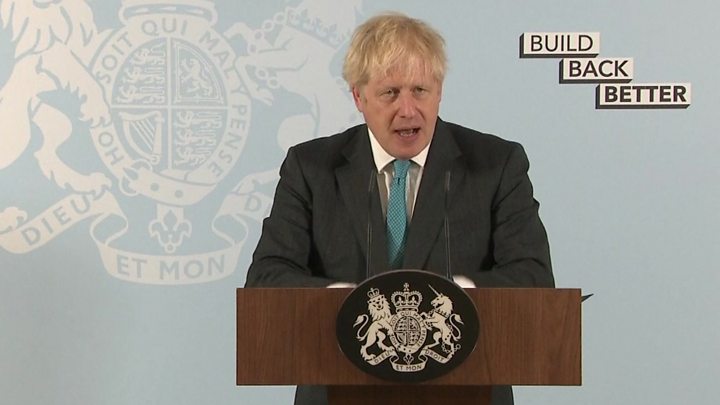Tonight, as Joe Biden accepts the Democratic nomination, his party is well-positioned for the fall. Indeed, it’s possible—even likely—that Democrats will claim unified control of the White House and Congress. As the Democratic National Convention wraps, it’s a good time to take a look at just what a big Democratic win might mean for education.
It’s true that Joe Biden was the most centrist top-tier candidate in the 2020 Democratic field and has spent nearly half a century as a fixture of the party’s moderate wing. But it’s also the case that he’s sketched the most expansive, ambitious federal education agenda in the nation’s history.

A Democratic win this November could bring major changes to education.
And big change may be uniquely possible next year for two reasons. The first is Democratic talk of abolishing the Senate filibuster, allowing a bare Senate majority to pass major legislation. It’s hard to overstate just how much that might matter. The second is that fiscal concerns seem unlikely to be much of an impediment after four years of President Trump and his GOP allies ridiculing worries about federal debt; massive, unfunded coronavirus relief; and the extinction of the Democratic budget hawks.
The upshot is that, come January, an energized Democratic party could be positioned to enact an education agenda inconceivable even just a few years ago. Especially on K-12, things would look starkly different from the Obama-Biden years, when the White House championed test-based accountability, teacher evaluation, the Common Core standards, and charter schooling. On each of these issues, Biden has moved sharply left, away from the “reform” wing of the Democrats and towards the teacher unions.
And yet, while charter schooling will surely take a hit, it’s less likely to be a haymaker than some might imagine. For all the current anti-charter school sentiment on the left, Democrats are more focused on attacking for-profit charters and limiting their growth than on defunding charters. This is due largely to ongoing splits on the left, as Black and Latino Democrats remain broadly supportive of charters. This coalitional tension is why the bulk of the action is likely to be elsewhere, focusing mostly on higher education and early childhood. Here are a handful of the biggest potential changes.
Free College: Biden has said he will “make up to two years of community college free for all students.” He’s also endorsed Sen. Bernie Sanders’ proposal to make public colleges and universities free for families earning less than $125,000 a year. Given that Biden’s plan is more modest than what some influential Democrats have called for, it’s not hard to imagine a more expansive Sanders-Warren plan taking shape.
College Debt Forgiveness. Biden has proposed forgiving all undergraduate “tuition-related” student debt for borrowers who earn less than $125,000 a year and attended public community colleges or four-year institutions. Biden has also backed Sen. Elizabeth Warren’s call to immediately cancel at least $10,000 of student debt per person.
Equality Act. If Democrats scrap the filibuster, it’s almost a surety that they’ll rapidly enact the Equality Act, adding “sexual orientation” and “gender identity” to Title II of the 1964 Civil Rights Act while expanding the law’s definition of public accommodations. The result would mean dramatic changes in policies governing college and school sports, dress codes, locker rooms, dormitories, and more.
Universal Preschool and Child Care. Biden has sketched a 10-year, $775 billion proposal to promote universal preschool for 3- and 4-year-olds, allocate federal funds to support the construction of new child-care facilities, and create an $8,000 tax credit to help low-income families pay for child care.
K-12. Here, Biden’s most significant commitment is boosting federal spending and the power of teacher unions. He has promised to triple funding for Title I to $45 billion per year, increase outlays for IDEA, the federal law that guarantees a free public education for students with disabilities, and double the number of “psychologists, guidance counselors, nurses, social workers, and other health professionals” in schools. He has also pledged to establish a federal right to collective bargaining for all public-sector employees and to overturn Janus v. AFSCME by banning state laws that stop unions from collecting fees from non-members “who benefit from union representation.”
For decades, education was the preferred way for candidates to court the center. In 1988, Bush used his promise to be “the education president” to illustrate his “kinder and gentler” conservatism. In 2000, education would serve as a hallmark of George W. Bush’s “compassionate conservatism.” For Bill Clinton, Al Gore, and Barack Obama, challenging teacher union orthodoxy and making higher education more affordable served to highlight their centrist bona fides. In 2020—as in 2016, when then-candidate Donald Trump embraced vouchers and denounced the Common Core—that’s no longer the case.
Every president enters office with a long list of promises. Most of them don’t come to fruition. But if Biden winds up enacting even a slice of this agenda, it could fundamentally alter the shape of American education. Little noticed amidst a pandemic, massive economic turbulence, and our raging culture wars, we might be just a couple months from the most significant education election in American history.



More Stories
Covid: PM promises ‘radical’ shake-up of adult education
Tear gas isn’t banned; Jersey City seniors deserve better housing; Education Matters team should win | Letters
Unequal education: Pandemic widens race, class gaps in U.S. schools